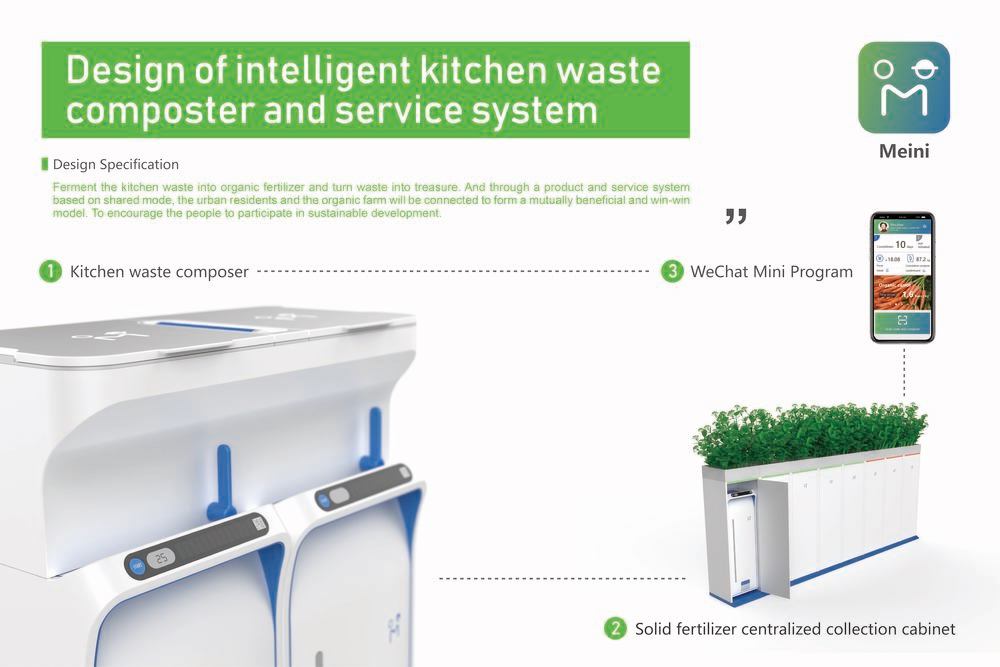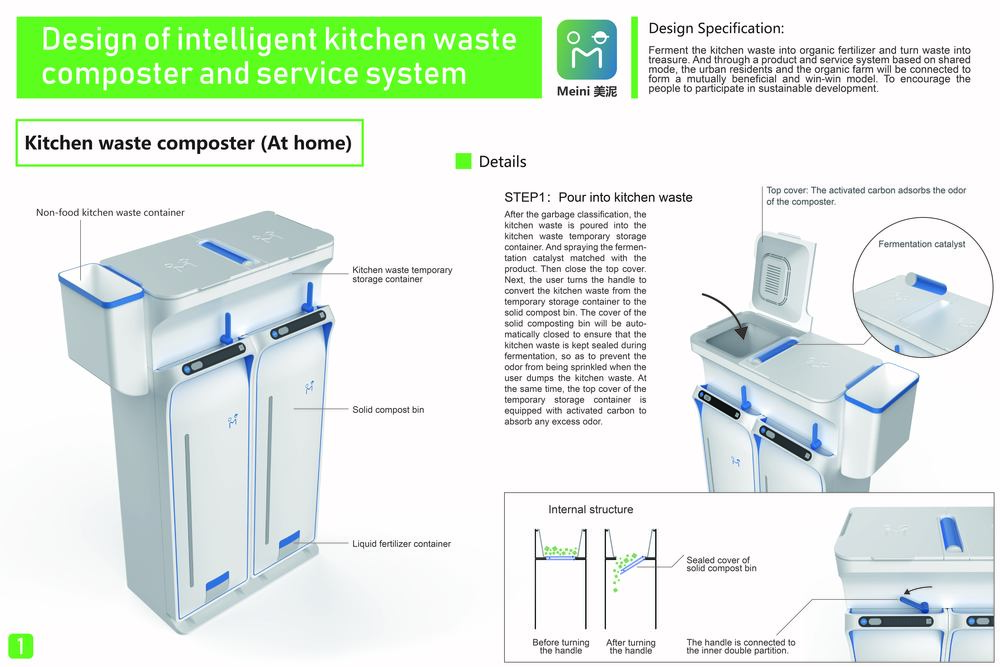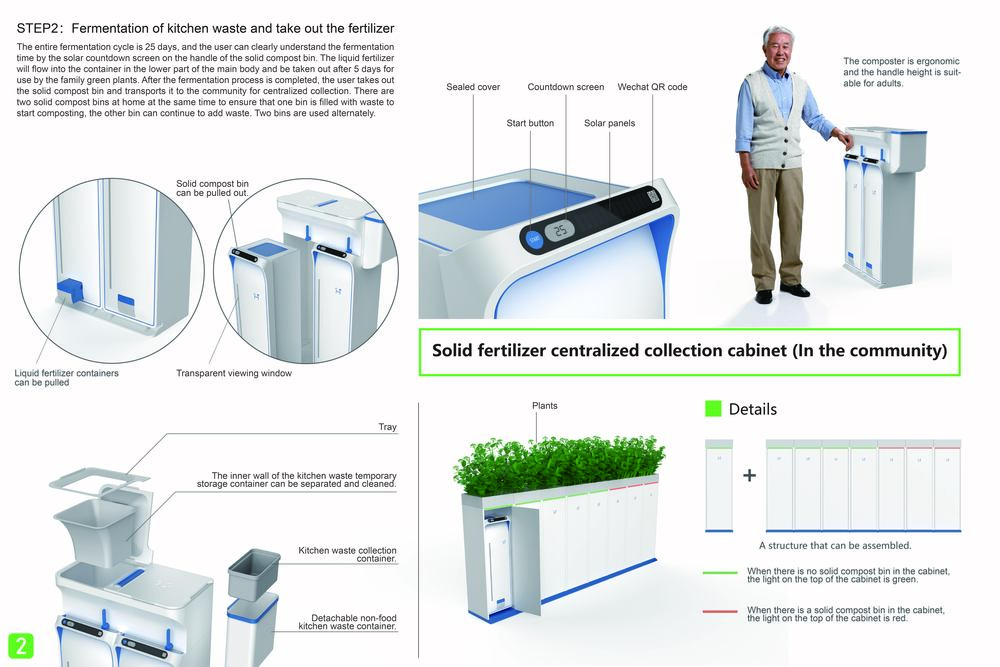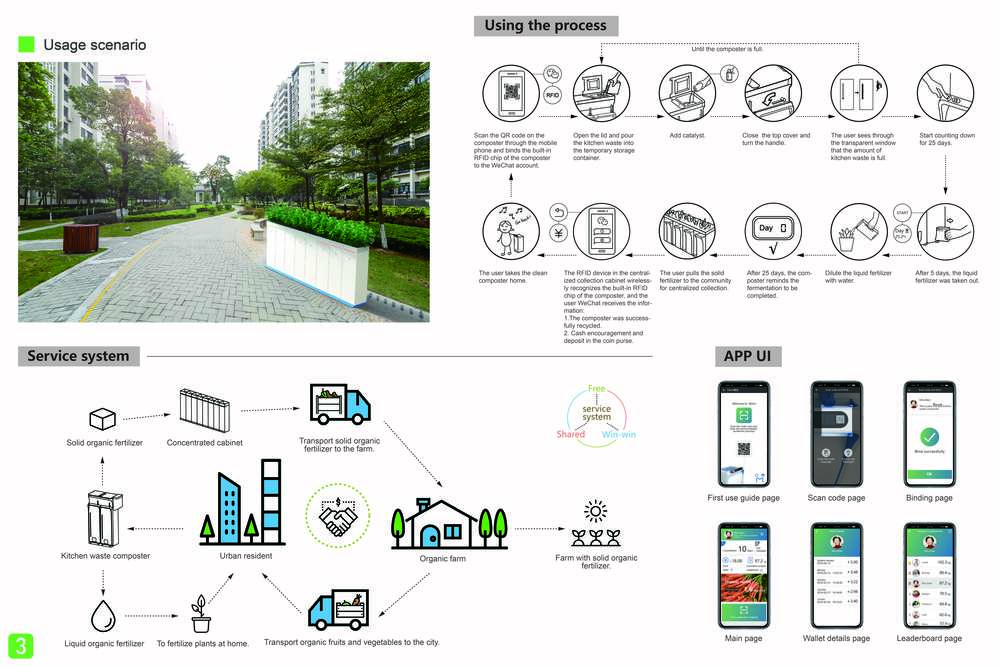Honorable Mention
Kitchen Waste Composter and Service System
Ferment the kitchen waste into organic fertilizer and turn waste into treasure
Solution
In China, kitchen waste accounts for 70% of urban household waste. At present, the classification of garbage is not yet perfect, and the treatment of kitchen waste will cause environmental pollution. If the kitchen waste is fermented into organic fertilizer, and through a product and service system based on shared mode, the urban residents and the organic farm will be connected to form a mutually beneficial and win-win model. To encourage the people to participate in sustainable development.
Project Description
In China, kitchen waste accounts for 70% of urban household waste. At present, the classification of garbage is not yet perfect, and the treatment of kitchen waste will cause environmental pollution. If the kitchen waste is fermented into organic fertilizer, and through a product and service system based on shared mode, the urban residents and the organic farm will be connected to form a mutually beneficial and win-win model. To encourage the people to participate in sustainable development. The intelligent kitchen composting converters are provided free of charge to residents by the community. Fermentation at home, liquid fertilizer can be used at home, and a large amount of solid fertilizer is collected in the community and transported to organic farms. Farmers get fertilizer for free and use it for crop cultivation. These crops will also be returned to the community for sale, and urban residents receive discounts.
Overview of the Solution
Research process: 1.Market research: We have investigated the products for the treatment of kitchen waste in the domestic and foreign markets, and have learned about the current development of the industry. 2.Field research: We visited a number of communities in the Beijing area, interviewed residents and observed the actual way of processing kitchen waste. 3.Personas:We categorized the interviewees and summarized four different types of user groups. 4.User journey map: We analyze the generation and treatment of kitchen waste in urban residents. And draw the complete user journey map. Finally, the existing pain points and design opportunity points of the existing food waste products were systematically deduced. Moreover, there is a difference between Chinese family living space and foreign countries. Most of them do not have independent courtyards, and the space for raising plants is small.
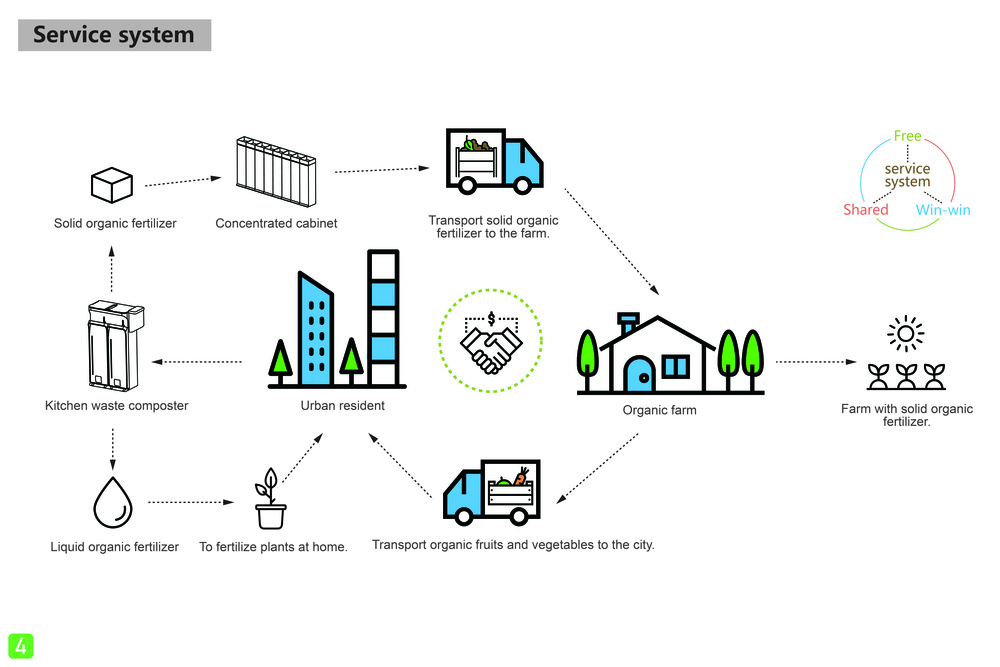
PROJECT TEAM
Feng Huirong and Zhang Hongtao
INSTITUTION
Beijing Institute of Technology (BIFT),
School of Fashion Accessory, China
Category
System
FACULTY/COURSE ADVISOR
Yangjiurui
